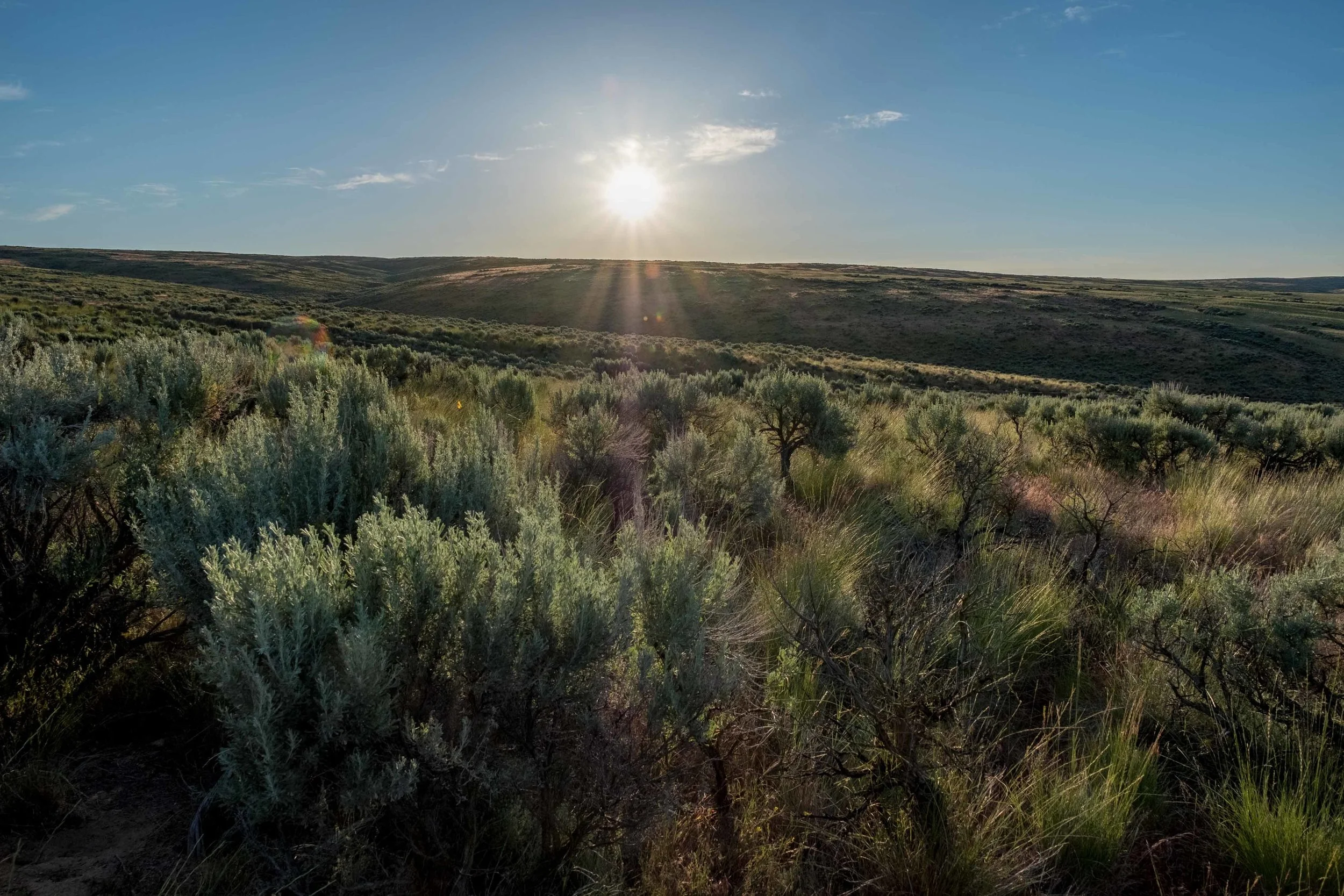By Jon Cowan, Stewardship Intern
When I received the offer to intern at Moses Coulee Preserve with The Nature Conservancy in August 2018, I knew I was in for a big change, but I had no idea how much of an adventure I was signing up for. My time as a Stewardship Intern represented a lot of firsts in my life. It was my first drive across the country, my first time living away from my home state, and my first time working in the northwest.
My journey out from Iowa was a transformative experience. Alone with my van for four days, I was struck by the beauty of the landscapes I drove through, from the long flats of South Dakota, to the majestic mountains of western Montana. On my last day of travel, I departed from Missoula and drove through rugged northern Idaho. After making it out of Spokane into the shrub-steppe of central Washington, I wondered what exactly I had gotten myself into. I was surrounded by brown, exposed farm soil, and had passed into a thick blanket of wildfire smoke upon crossing the state border, not a trace of golden sunlight or blue sky in sight. This was a far cry from my mental image of Washington as a flourishing mixture of clear water and evergreen forests.
After settling in at the field station though, I quickly fell in love with the landscape. While it may appear barren at first sight, the sagebrush ecosystem of Moses Coulee is teeming with life. Formed by cataclysmic floods at the end of the last ice age, this canyon is home to a diverse array of wildlife.
Below ground, the pygmy rabbits hide in their burrows, while above ground, the native rattlesnakes warm themselves on the talus slopes. The shrub-steppe is also home to the enigmatic sage grouse, whose habitat we set out to conserve. Though we never saw one in person, we had many other exciting wildlife encounters. From the wandering herds of mule deer to the long, airborne fights between the local hawks and kestrels, there was never a dull moment in the preserve.
For 3 months, my co-intern Claire and I put dozens of miles on our boots in the dry air and relentless sun of the coulee to map out invasive vegetation, improve fences, and mark preserve boundaries. We met locals with fascinating stories and got to explore the rugged forests around the Lake Chelan with the Department of Fish and Wildlife. We saw epic geological features and learned about tree-planting and water monitoring with Foster Creek Conservation staff. Despite the harsh desert conditions, I felt completely at home at the field station and included as part of the TNC family. My term of service came to an end just as the leaves of the aspen trees were turning a radiant shade of deep golden yellow. I was sad to leave but grateful and humbled by the opportunity to be a part of something greater than myself, in such a majestic landscape.




























